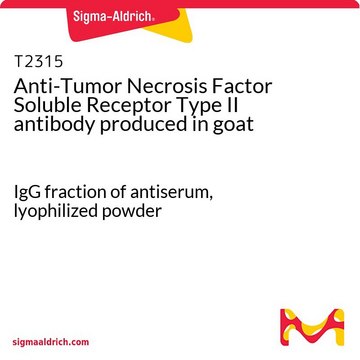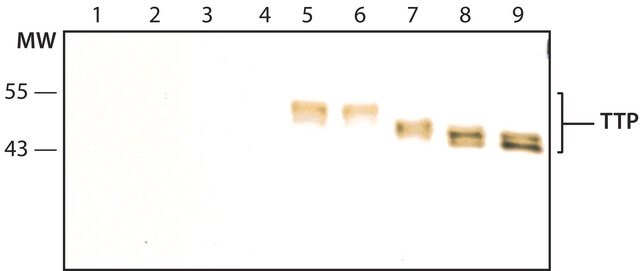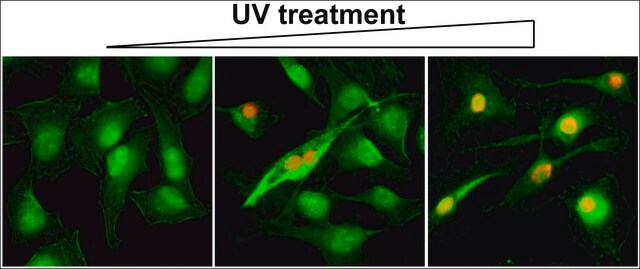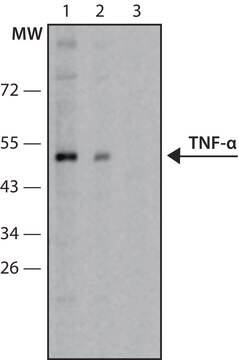T1815
Monoclonal Anti-Tumor Necrosis Factor Receptor II antibody produced in mouse
clone 22221, purified immunoglobulin, lyophilized powder
Sinônimo(s):
Anti-TNF RII, Anti-TNFRSF1B
About This Item
Produtos recomendados
fonte biológica
mouse
Nível de qualidade
conjugado
unconjugated
forma do anticorpo
purified immunoglobulin
tipo de produto de anticorpo
primary antibodies
clone
22221, monoclonal
forma
lyophilized powder
reatividade de espécies
human
técnica(s)
immunocytochemistry: 8-25 μg/mL using immersion fixed human peripheral blood lymphocytes
microarray: suitable
neutralization: suitable
Isotipo
IgG2a
nº de adesão UniProt
temperatura de armazenamento
−20°C
modificação pós-traducional do alvo
unmodified
Informações sobre genes
human ... TNF(7124)
Descrição geral
Especificidade
Imunogênio
Aplicação
forma física
Nota de preparo
Exoneração de responsabilidade
Não está encontrando o produto certo?
Experimente o nosso Ferramenta de seleção de produtos.
Código de classe de armazenamento
12 - Non Combustible Liquids
Classe de risco de água (WGK)
WGK 1
Ponto de fulgor (°F)
Not applicable
Ponto de fulgor (°C)
Not applicable
Certificados de análise (COA)
Busque Certificados de análise (COA) digitando o Número do Lote do produto. Os números de lote e remessa podem ser encontrados no rótulo de um produto após a palavra “Lot” ou “Batch”.
Já possui este produto?
Encontre a documentação dos produtos que você adquiriu recentemente na biblioteca de documentos.
Nossa equipe de cientistas tem experiência em todas as áreas de pesquisa, incluindo Life Sciences, ciência de materiais, síntese química, cromatografia, química analítica e muitas outras.
Entre em contato com a assistência técnica








